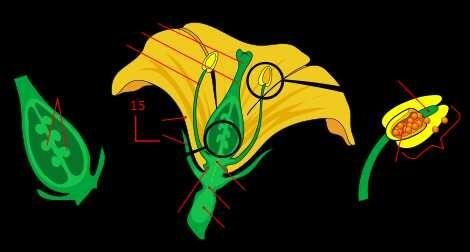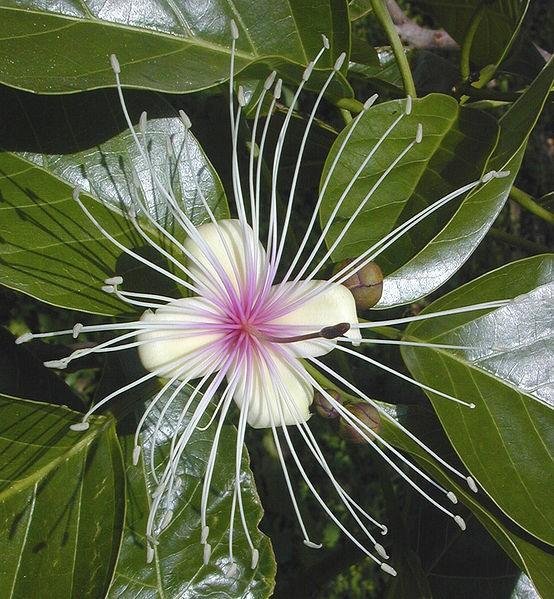Dear Steemit Friend;

source image
Flower or flower (Latin: flos) is a sexual reproduction tool in flowering plants (divisio Magnoliophyta or Angiospermae, "covered seed plants"). In flowers there are reproductive organs, namely stamens and pistils.
Flowers can appear singly or together in a series. The interest that comes together is called a compound interest or inflorescence. In some species, compound interest may be regarded as a single (flower) interest, for example in Anthurium and sunflower. The unit of interest that composes a compound interest is called a floret. Botanically, flowers are part of the plant to produce seeds.
Pollination and fertilization take place on flowers. After fertilization, the flowers will develop further form fruit. In flowering plants, fruit is the structure that carries and protects the seeds.

source image
Function.
The biological function of the flower is the sexual organ, as a container for the unification of male gametes (microspores) and females (macrospores) to produce seeds. That interest is analogous to the sexual organs in a new animal is scientifically realized on 17th century in Europe.
Some flowers have a bright color that serves as a lure of pollinating animal animals. Some other flowers produce a distinctive heat or aroma, also aiming at luring animals to help pollinate.
Flowers can also be considered as organs to survive under adverse conditions for growth. A number of plants will soon form flowers if they experience water shortages or low temperatures. The best known example is paper flower Bougainvillea.
Interest reduces metabolism and when plants die, the seed is expected to have formed as a survival effort.
Humans have long been captivated by flowers, especially the colorful ones that have a cultural meaning. Flowers become one of the determinants of the value of a plant as decorative plants .
Perfect flower parts.
- Perfect flower
- Pistil (stigma).
- Pistil (stilus)
- Stalk (filament, part of stamens)
- Flower axis (axis), 6. articulation.
- Flower stalk (pedicel )
- Nectar gland.
- Stamen.
- Fruit (ovum).
- ovulum.
- Flower jewelry (periantheum).
- Crown of flowers (corolla).
- Petals (calyx).

Flowers are the modified leaves and stems around them. This modification is caused by the resulting number enzymes that are stimulated by a number
certain fitohormon.
The formation of flowers is strictly genetically controlled and in many types induced by certain environmental changes, such as
low temperature, long lighting, and water availability (see section Interest: Flower formation). Flowers are almost always symmetrical, which can often be used as a detector of a taxon.
There are two forms of interest based on the symmetry of the form: aktinomorf ("star shape", radial symmetry) and zigomorph (mirror symmetry). Aktinomorph forms are more common.
Minat yang datang bersama disebut bunga majemuk atau perbungaan. Pada beberapa spesies, bunga majemuk dapat dianggap sebagai bunga tunggal (bunga), misalnya pada Anthurium dan bunga matahari. Unit bunga yang menyusun bunga majemuk disebut floret. Bunga yang bagus dan indah @zahara
Downvoting a post can decrease pending rewards and make it less visible. Common reasons:
Submit
Thank you atas solusi nya dan kritikan anda. @sall
Downvoting a post can decrease pending rewards and make it less visible. Common reasons:
Submit
Informasi yang sangat bagus tenntang bunga
Downvoting a post can decrease pending rewards and make it less visible. Common reasons:
Submit
Terimakasih kawah atas partisipasinya @fajri
Downvoting a post can decrease pending rewards and make it less visible. Common reasons:
Submit